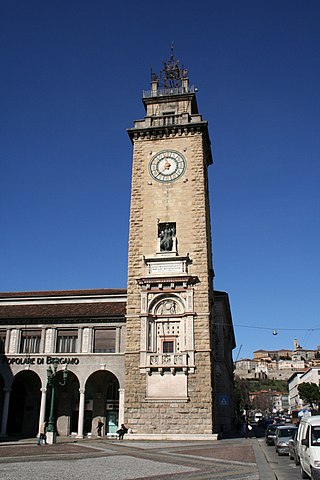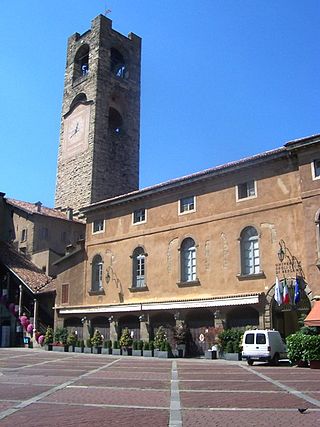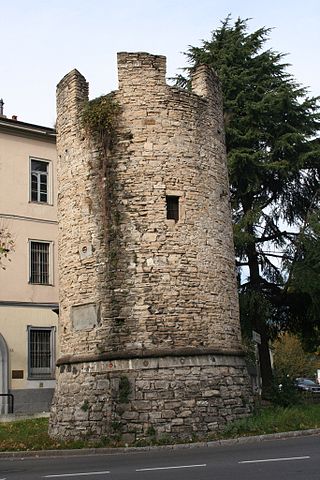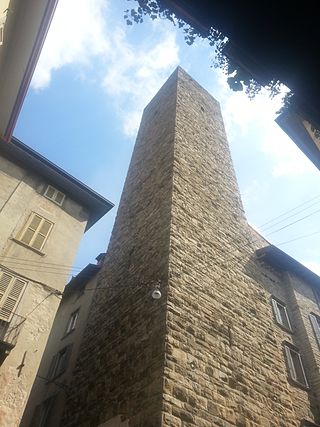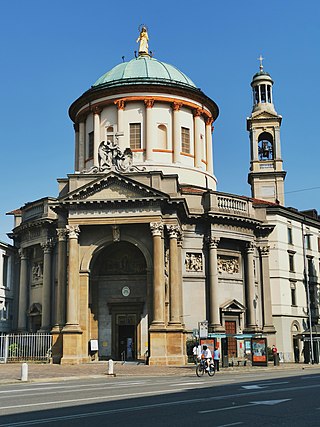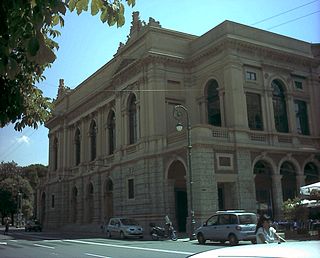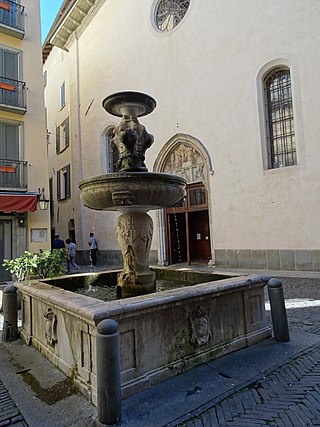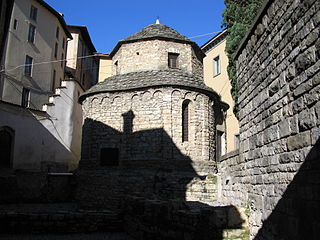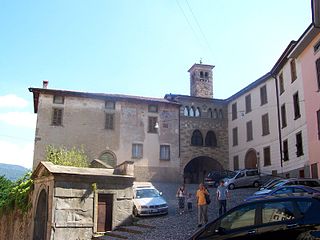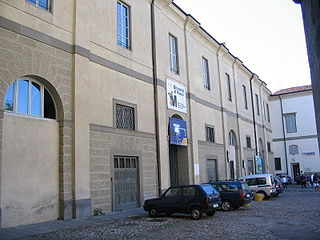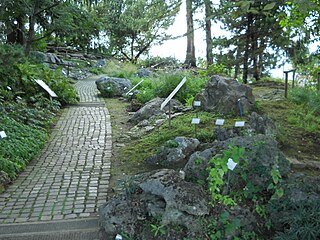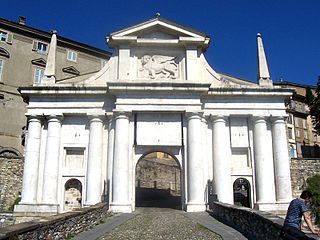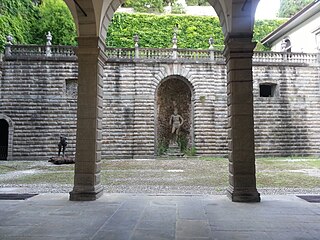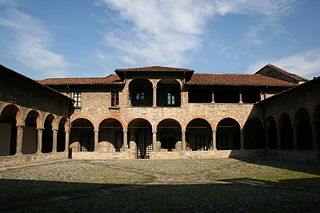16 Sights in Bergamo, Italy (with Map and Images)
Legend
Premium Sights
Book tickets, guided tours and activities in Bergamo.
Guided Free Walking Tours
Book free guided walking tours in Bergamo.
Welcome to your journey through the most beautiful sights in Bergamo, Italy! Whether you want to discover the city's historical treasures or experience its modern highlights, you'll find everything your heart desires here. Be inspired by our selection and plan your unforgettable adventure in Bergamo. Dive into the diversity of this fascinating city and discover everything it has to offer.
Sightseeing Tours in BergamoActivities in Bergamo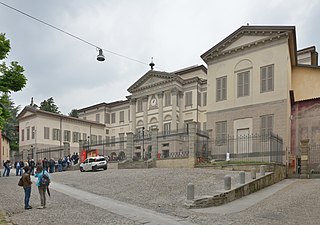
The Accademia Carrara,, officially Accademia Carrara di Belle Arti di Bergamo, is an art gallery and an academy of fine arts in Bergamo, in Lombardy in northern Italy. The art gallery was established in about 1780 by Giacomo Carrara, a Bergamasco collector or conoscitore of the arts. The academy of fine arts was added to it in 1794. The school was recognised by the Ministero dell'Istruzione, dell'Università e della Ricerca, the Italian ministry of education, in 1988 and in 2023 merged with the Conservatorio Gaetano Donizetti to form the Politecnico delle Arti di Bergamo.
The Tower of the Fallen of Bergamo is located in the lower part of the city in Piazza Vittorio Veneto, at the beginning of the Sentierone, the so-called living room of Bergamo. From 24 May 2015, after a period of restoration, it can be visited again.
3. Palazzo del Podestà, Museo del Cinquecento
The Palazzo del Podestà is a historic building in the city of Bergamo located on Piazza Vecchia and houses the Museum of the Sixteenth Century which is part of the network of the Museum of the Stories of Bergamo managed by the Bergamo Foundation in history.
4. Torre del Galgario
The Torre del Galgario is a circular tower of military origin, which was part of the Muraine, ancient walls that have now disappeared, and is located in the lower city of Bergamo in the homonymous Largo del Galgario. The Church of Galgario also overlooks the square with an adjoining monastery that gave its name to the painter Giuseppe Ghislandi, and which then changed its intended use, becoming the Nullo Barracks.
5. Torre del Gombito
The Gombito tower is located in the upper part of the city of Bergamo, at the intersection of the street of the same name, Via San Lorenzo and Via Mario Lupo, the most central and important crossroads of the ancient city.
6. Santa Maria Immacolata delle Grazie
The church of Santa Maria Immacolata delle Grazie is located in Bergamo on Viale Papa Giovanni XXIII, near the propylaea also called Barriera delle Grazie, it is the first place of worship that the visitor encounters arriving from the railway station.
Wikipedia: Chiesa di Santa Maria Immacolata delle Grazie (IT)
7. Teatro Donizetti
The Teatro Donizetti is an opera house in Bergamo, Italy. Built in the 1780s using a design by architect Giovanni Francesco Lucchini, the theatre was originally referred to as either the Teatro Nuovo or Teatro di Fiera. The first opera to be mounted at the theatre, Giuseppe Sarti's Medonte, re di Epiro, was in 1784 while the opera house was still under construction. The official opening of the house, under the name the Teatro Riccardi, did not occur until 24 August 1791 with a production of Pietro Metastasio's Didone abbandonata set to music by multiple composers, including Ferdinando Bertoni, Giacomo Rampini, Johann Gottlieb Naumann, Giuseppe Gazzaniga, and Giovanni Paisiello.
8. Fontana di San Pancrazio
The fountain of San Pancrazio is located on the square of the same name in Bergamo in front of the church dedicated to the saint of Turkish origin and rebuilt in 1450. Because of its shape, it is also called hyacinth's bud.
9. Templetto Santa Croce
The Tempietto di Santa Croce is a small octagonal Romanesque chapel found in the upper city of Bergamo, near the Santa Maria Maggiore. The original building was constructed in the first half of the 11th century, though first documentation of the structure dates to 1133. Other Romanesque structures in the province include the Rotonda di San Tomè, the Basilica di Santa Giulia, and the Priorato di Sant'Egidio.
10. Chiesa di Sant'Andrea Apostolo
Sant'Andrea is a Neoclassic church in Bergamo, rebuilt by Ferdinando Crivelli in 1837. On the main altar, is Enthroned Madonna with child and Saints Eusebius, Andrew, Domno, and Domneone, painted in 1536-7 by Il Moretto and a Nativity by Giovanni Paolo Cavagna. Other paintings here are by Palma il Giovane, Enea Salmeggia, Giovanni Giacomo Barbelli, Padovanino, a ‘’Deposition’’ by Andrea Previtali, and others.
11. Chiesa di San Michele al Pozzo Bianco
San Michele al Pozzo Bianco is a church in the upper town of Bergamo, on a small piazza of the same name, near Porta Sant'Agostino, on Via Porta Dipinta. The church is now in a corner next to the frescoed house of the vicar, entered by a large rounded arch. The vicar's house has an external fresco attributed to Giacomo Scanardi.
12. Museo Civico di Scienze Naturali E. Caffi
The Enrico Caffi Civic Museum of Natural Sciences in Bergamo, located in the Upper Town in the Citadel near the Civic Archaeological Museum of Bergamo, preserves more than a million artifacts distributed over an exhibition area of over 1800 m².
Wikipedia: Museo di scienze naturali (Bergamo) (IT), Website
13. Orto Botanico di Bergamo Lorenzo Rota
The "Lorenzo Rota" Botanical Garden of Bergamo, which is located on the open hill of the Upper Town, is a small naturalistic laboratory where the passion and art of the workers make exotic plants coexist with indigenous ones. It is part of the Network of Botanical Gardens of Lombardy, an association that the Garden of Bergamo has contributed in a decisive way to create and which aims to "protect, knowledge, promote and enhance the heritage of botanical gardens, nature and the environment". It is named after Lorenzo Rota, a doctor and botanist who was the first to describe the flora of the province of Bergamo. The 10,000 samples he collected are kept in the herbarium of the Botanical Garden consisting of about 50,000 exiccata.
14. Porta San Giacomo
Porta San Giacomo, perhaps the most beautiful of the access gates from the Venetian walls to the upper city of Bergamo, was built in 1592, it is the only one in pinkish white marble from the Zandobbio quarry in Val Cavallina. The construction of the Venetian walls began in 1561, and they were to be the outpost protected to the west of the territories of the Serenissima by the Milanese who after the death of Francesco Sforza II (1535) and the peace of Cateau-Cambrésis (1559) had become a Spanish province. The walls have four gates that make the entrance to the upper part of the city accessible: Porta San Lorenzo, Porta Sant'Agostino, Porta Sant'Alessandro and Porta San Giacomo, and until the mid-twentieth century when the Campanone at 10 pm struck a hundred tolls, they were closed.
15. Fondazione Museo di Palazzo Moroni
The Palazzo Moroni is a palace located on Via Porta #12 in the historic center of the upper town of Bergamo, Italy. The palace is a civic art museum, as well as used for cultural functions. The building, noted for its Baroque interior decorations, is presently managed by the Fondazione di Palazzo Moroni in conjunction with the city after a donation by Count Antonio Moroni.
16. Museo delle storie di Bergamo - Convento di San Francesco
The Historical Museum of Bergamo or Museum of the Stories of Bergamo is the museum and administrative venue in the Alta city, in the former convent of San Francesco as regards the offices, the library and the archives, and manages more permanent offices that study and exhibit the Political, economic, and social history of the city and its territory. The museum pole also offers large spaces for temporary events and exhibitions.
Share
How likely are you to recommend us?
Disclaimer Please be aware of your surroundings and do not enter private property. We are not liable for any damages that occur during the tours.
